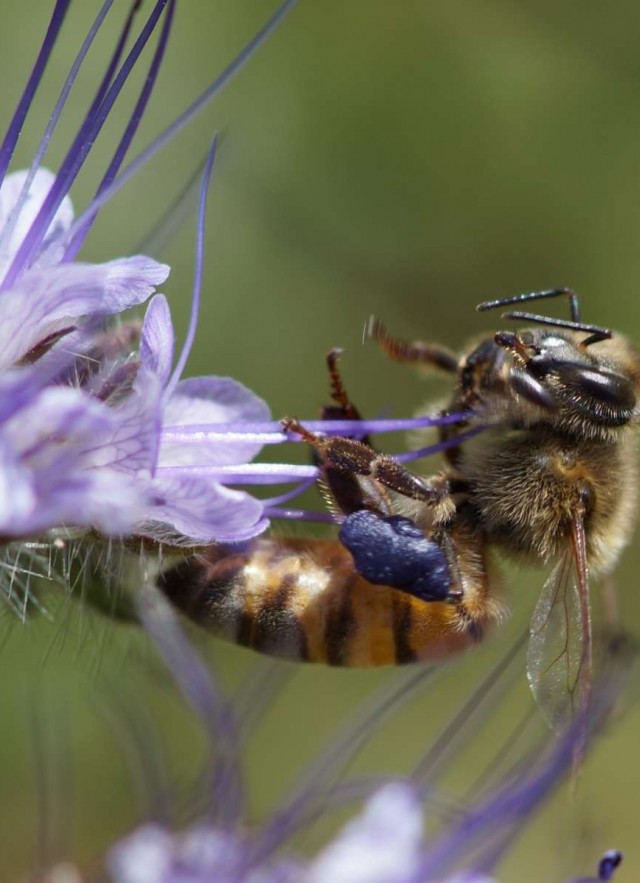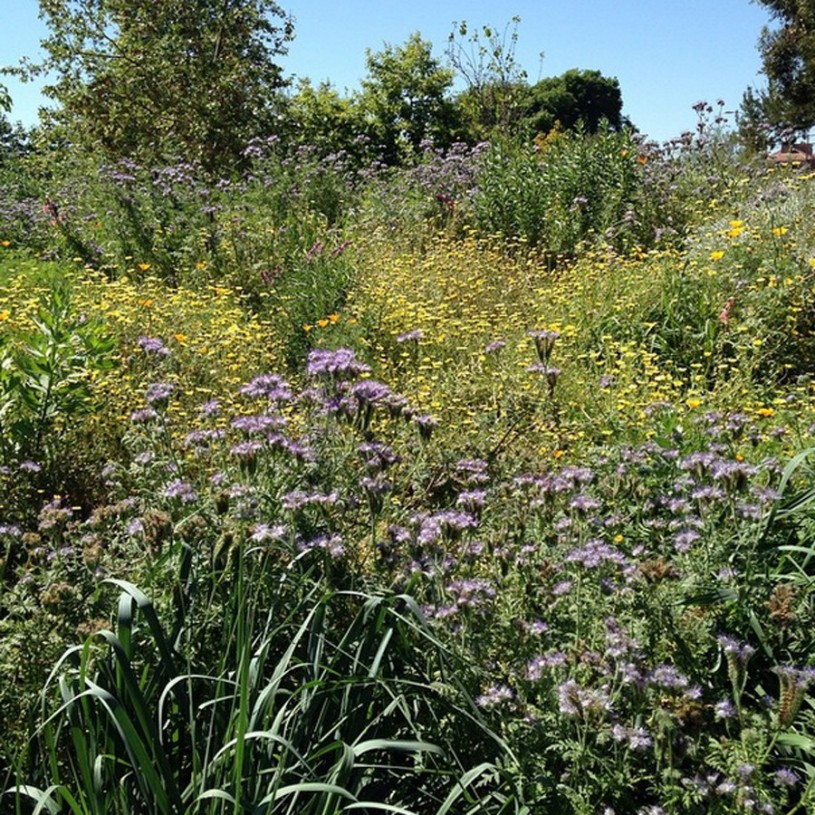Purple Pollen Eaters: A Honeybee's Love Affair with Phacelia

Spring is here and everyone is totally digging the wildflower display in our Nature Gardens. Casey Schreiner from Modern Hiker even gave us a shoutout on Instagram.
It's a good day for #wildflowers at the @nhmla!
The two flowers vying for your attention in this photo are, according to Carol Bornstein, Nature Gardens Director and native plant guru, "the white-tipped yellow blossoms of tidy tips, Layia platyglossa, and tansy leaf phacelia, Phacelia tanacetifolia." Carol goes on to explain, "the nectar-rich, sweetly scented purple flowers of this taller annual are attracting droves of bees." Boy is this true.
Earlier this week, Museum Gallery Interpreter Ashley Hall witnessed this first hand. Ashley’s seen bees in the garden hundreds of times, pointed them out to visitors, and taken lots of pictures of them. But this week something was different. Ashley noticed that the bees visiting the phacelia flowers had purple pollen baskets, or as the entomologists like to call them, corbiculae.

We all know that hungry bees visit flowers for that tasty nectar treat that will fuel their active lifestyles. Some of this nectar will be taken back to the hive to be turned into honey, so they can eat it in the leaner winter months. But to supplement their carb-laden diet, bees also collect pollen to add a protein punch. As bees are going from flower to flower they are also inadvertently transferring pollen—“picking up” pollen grains from the male flower parts (anthers), and then “dropping them off” on the female bits (stigmas). Thanks to this act of pollination, seeds will eventually form, ripen, and fall to the ground. In our dry California climate, wildflower seeds will wait all summer long, until the rainy season comes again in the fall (keep your fingers crossed with me). This sweet, long awaited rain will stimulate germination and ensure another crop of tansy leaf phacelia in our garden.

But why is phacelia pollen purple? When we think of pollen, most people think of a bright yellow powder. But in fact, pollen comes in a whole painters’ palette—from white to orange, and green to brown and red, even bright blue, fuschia, and purple! In traditional yellow pollen, the color is mostly derived from flavonoids, chemicals found in abundance in citrus. Unfortunately, there hasn’t been a lot of research on what makes pollen purple, but my guess is another colorful compound, anthocyanin, which is present in blueberries and raspberries. Boy, do I wish I had paid closer attention in chemistry classes. Regardless of the ultimate cause of the color, we’re sure glad Ashley took a moment to look closely at the bees buzzing around the gardens. Just imagine what you’ll find next time you put your nature eyes on in L.A.!